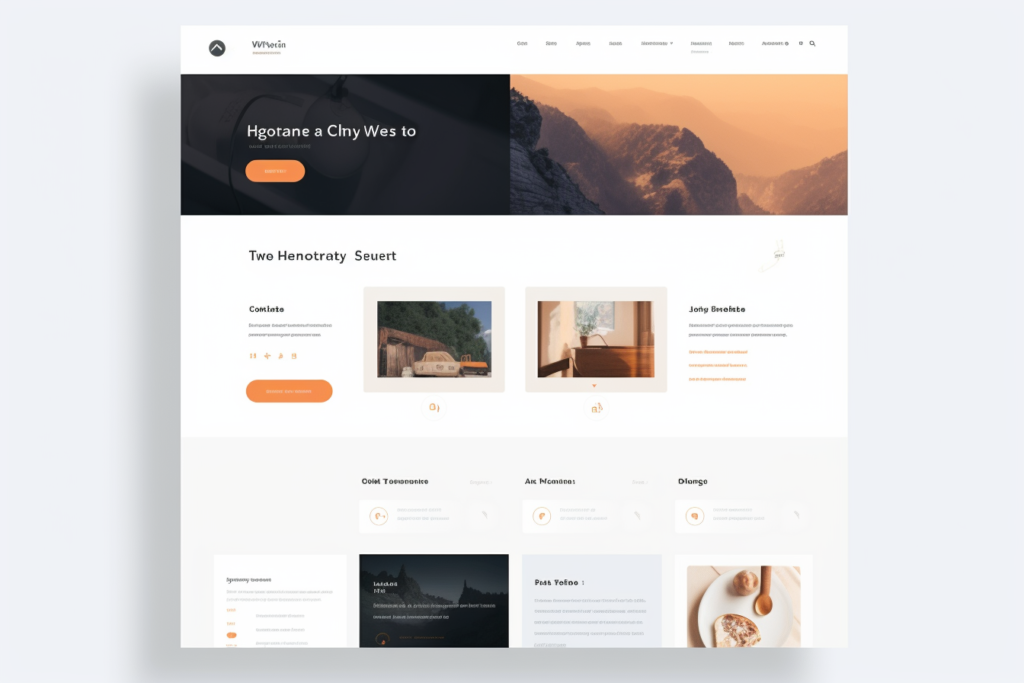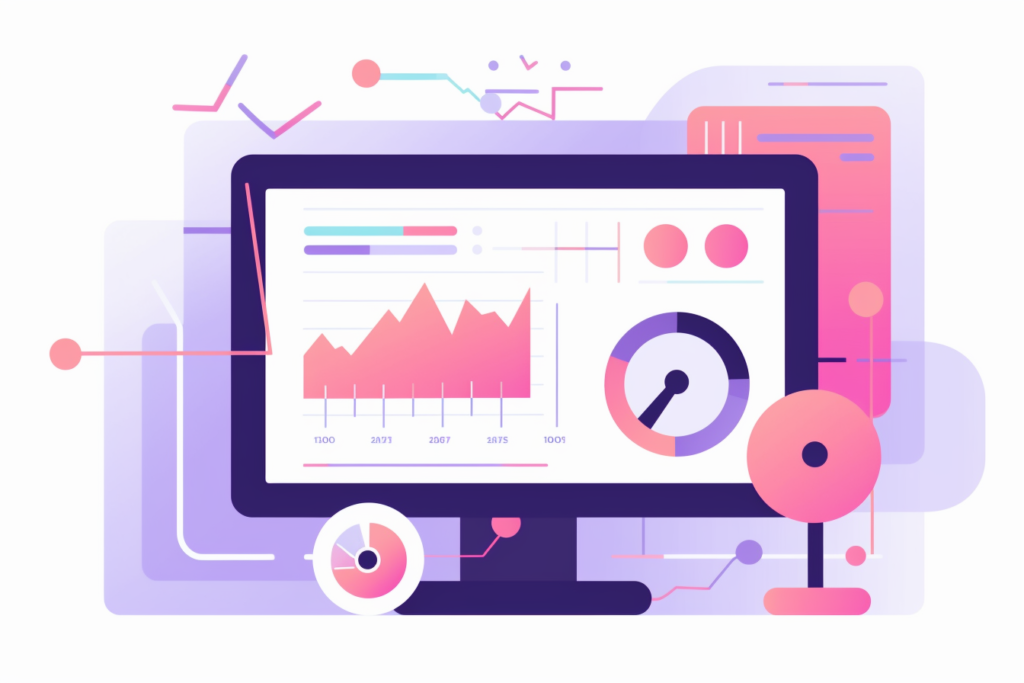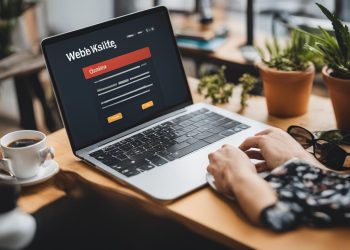As the owner of a website, I recognize the importance of maintaining its smooth operation and efficient optimization. A well-designed website draws in potential customers and ensures a pleasant experience for current users. In the current digital landscape, properly optimizing a website is critical for the success of any business or organization.
In this comprehensive guide, I will provide you with the necessary tools and strategies to maximize your website’s performance. From understanding your target audience to analyzing and measuring your results, I will cover all aspects of content optimization and SEO techniques.
Whether you’re a beginner or an experienced website owner, this guide will provide you with valuable insights to take your website to the next level. So let’s dive in and start optimizing your website for maximum performance.
Understanding your Target Audience

Get to know your audience by understanding their wants and needs – it’s crucial for creating content that resonates with them.
Demographic analysis is the first step in identifying your target audience. It involves gathering information about age, gender, income, education level, and other relevant factors that define your audience’s makeup. Once you have this information, you can start to piece together a picture of the people you are trying to reach.
Behavior patterns are another crucial aspect of understanding your audience. By analyzing their online behavior, you can determine what types of content they engage with, the channels they use to access information, and the types of products or services they’re interested in. This information can help you tailor your content to their preferences and create a more effective marketing strategy.
Psychographics and market segmentation are essential tools for developing a detailed understanding of your audience. These techniques help you identify the motivations, attitudes, and beliefs that drive consumer behavior. By segmenting your audience based on these factors, you can create targeted content that speaks directly to their interests and needs.
Persona development is yet another critical aspect of understanding your audience. By creating detailed personas that represent different segments of your target market, you can develop content that resonates with each group. This approach can help you create more effective marketing campaigns and increase your overall engagement with your audience.
By taking the time to understand your target audience, you can create content that resonates with their wants and needs. Demographic analysis, behavior patterns, psychographics, market segmentation, and persona development are all crucial tools in this process. By using these techniques, you can create content that’s more effective in engaging your audience and driving conversions. Understanding your audience is the first step in creating a successful online presence.
Conducting Keyword Research

You’ll want to research keywords thoroughly to ensure your website is reaching the right audience. Did you know that, according to a recent study, long-tail keywords make up 70% of all online searches? This means that using long-tail keywords in your content can greatly improve your website’s visibility and attract more traffic. However, it’s important to note that long-tail keywords tend to have lower search volume and higher keyword difficulty, so finding the right balance is crucial.
To conduct keyword research effectively, consider the following tips:
- Determine your target audience and their search intent to identify relevant keywords
- Analyze keyword difficulty and search volume to find high-impact keywords with low competition
- Conduct competitor analysis to identify gaps in their keyword strategy and capitalize on them
Once you have a list of potential keywords, it’s important to map them to your website’s content. Keyword mapping involves assigning keywords to specific pages or sections of your website to ensure that each page is targeting the right keywords.
Additionally, incorporating local keywords can help improve your website’s visibility for users searching for location-specific information.
Incorporating the right keywords into your website’s content can greatly improve its performance, but it’s important to approach keyword research strategically. By conducting thorough research and mapping keywords to specific pages, you can improve your website’s visibility and attract more targeted traffic.
Crafting Compelling Content

Crafting compelling content is essential for engaging your audience and driving traffic to your site. To do this, you should start by using effective writing techniques.
Make sure to write in a clear and concise manner, using short sentences and paragraphs. This will make your content easy to read and understand. Additionally, use active voice to make your writing more dynamic and engaging.
Visual storytelling is another powerful tool for creating compelling content. Using images, videos, and infographics can help you convey your message in a more compelling and memorable way.
When using visual storytelling, make sure to choose the right storytelling formats to suit your content. For example, if you’re explaining how to use a product, you may want to use a step-by-step infographic. If you’re telling a story, a video might be more effective.
Finally, when crafting your content, consider your tone and voice. This will help you establish a connection with your audience and make your content feel more personal. Additionally, make sure to use call-to-action strategies to encourage your audience to take action, such as signing up for a newsletter or purchasing a product.
By focusing on these elements, you can create content that resonates with your audience and drives traffic to your site.
Optimizing your Website’s Loading Speed

Improving your site’s loading speed is crucial for keeping visitors engaged and preventing them from getting frustrated with slow load times. One of the first things to consider is minimizing redirects. Redirects can slow down your website because they add extra time for the server to process the request. To minimize redirects, you can use tools like the Redirect Mapper to identify any unnecessary redirects and remove them.
Another effective way to optimize your website’s loading speed is through image compression. Large image files can significantly slow down your website, so it’s important to compress them without compromising their quality. You can use tools like TinyPNG or ImageOptim to compress your images without sacrificing their resolution.
Browser caching is another important factor when it comes to optimizing your website’s loading speed. By enabling browser caching, you can store frequently accessed files on the visitor’s computer, reducing the number of requests made to the server. This can significantly reduce load times for returning visitors.
To further improve loading times, you can also consider using content delivery networks (CDN). CDNs store your website’s files in multiple locations, allowing visitors to access the files from the server closest to their location. This can drastically reduce load times for visitors who are far away from your server.
Finally, it’s important to optimize your server response time by ensuring that your server is running efficiently and that you’re using a reliable hosting provider. By implementing these strategies, you can significantly improve your website’s loading speed and keep visitors engaged.
Improving User Experience and Navigation

Let’s dive into ways to enhance your visitors’ time on your website by making their experience enjoyable and their navigation simple.
One of the most important aspects of user experience is mobile responsiveness. With more and more people using their phones to browse the web, it’s crucial that your website is optimized for mobile devices. Make sure your website is easy to navigate on a smaller screen, and that all images and text are properly sized and displayed. A mobile-friendly website will not only improve user experience, but it’ll also boost your search engine rankings.
Clear labeling is another key factor in improving user experience and navigation. Visitors should be able to easily find what they are looking for on your website. Use clear and concise labeling for your menu items and pages, and make sure your search bar is easily accessible. You can also use breadcrumbs to help users navigate back to previous pages. By making it easy for visitors to find what they need, you’ll reduce frustration and increase the likelihood of them staying on your website longer.
Finally, incorporating interactive elements and consistent branding can also improve user experience and navigation. Interactive elements, such as quizzes or polls, can engage visitors and encourage them to spend more time on your website. Consistent branding, including colors, fonts, and imagery, will help visitors recognize your brand and feel more comfortable navigating your website. By incorporating these elements, you can create a positive user experience that’ll keep visitors coming back.
Utilizing On-Page SEO Techniques

It’s time to up your website game by mastering the art of on-page search engine techniques. One of the most important techniques is the use of meta tags. These tags help search engines understand what your website is all about and are displayed in the search engine results pages.
Make sure to include relevant keywords in your meta title and description to increase your chances of being clicked on by potential visitors.
Image optimization is another important on-page SEO technique. Not only do optimized images improve your website’s load time, but they also help search engines understand the content on your page. Make sure to use descriptive file names and alt tags for your images. Additionally, compressing images can drastically reduce their size without compromising their quality.
Heading structure and internal linking are also crucial on-page SEO techniques. Proper use of heading tags (H1, H2, H3, etc.) helps search engines understand the hierarchy of your content and what is most important. Internal linking, on the other hand, helps to spread link equity throughout your website and keeps visitors engaged by directing them to related content.
Lastly, make sure your website is mobile-responsive. With more and more people using their mobile devices to browse the internet, having a mobile-friendly website is a must for both user experience and search engine rankings.
By utilizing these on-page SEO techniques, you can improve your website’s performance and increase your chances of ranking higher in search engine results pages. Remember to always think about your audience and provide them with the best possible experience on your website. Happy optimizing!
Building Quality Backlinks

We’re diving into how to boost your website’s authority through the power of quality backlinks. One of the most effective outreach tactics to acquire backlinks is through guest posting. This involves writing high-quality content that is relevant to your niche and pitching it to other websites to publish.
In your guest post, you can include anchor text that links back to your website. Anchor text is the clickable text that appears as a hyperlink and should be relevant to the content it links to. When it comes to link building best practices, it’s important to focus on quality over quantity.
Google’s algorithm values backlinks from high-authority websites, so it’s crucial to target those sites. Additionally, niche relevance is key. Backlinks from websites that are related to your industry or topic signal to search engines that your website is an authority in that area.
To ensure your backlinks are relevant, consider using tools like Ahrefs to analyze your competitors’ backlink profiles and identify potential websites to target. Finally, it’s important to pay attention to authority signals when building backlinks.
These are metrics that indicate the credibility and trustworthiness of a website. Metrics like domain authority, page authority, and Trust Flow can help you determine the quality of a website and whether it’s worth pursuing a backlink from. By focusing on outreach tactics, anchor text, link building best practices, niche relevance, and authority signals, you can build a strong backlink profile that boosts your website’s authority and improves your search engine rankings.
Analyzing and Measuring Your Results

To see how my efforts are impacting my website’s authority and search engine rankings, I regularly analyze and measure my results through various analytics tools like Google Analytics or SEMrush. These tools provide me with important metrics that help me understand the effectiveness of my backlink-building efforts. By analyzing these metrics, I can identify areas for improvement, such as targeting higher authority websites or adjusting my outreach tactics.
Measuring metrics is not the only way to analyze website performance. Conversion rates, user behavior, and performance analysis are also crucial factors to consider. By tracking conversion rates, I can determine the effectiveness of my website’s content and design in converting visitors into customers. User behavior analysis helps me understand how visitors interact with my website, allowing me to optimize the user experience. The performance analysis involves monitoring website speed and load times, ensuring that my website is fast and responsive for users.
Analytics tools play a crucial role in measuring website performance. By using these tools, I can gain valuable insights into my website’s traffic, user behavior, and conversion rates. These insights allow me to make data-driven decisions, improving my website’s overall performance and search engine rankings.
Ultimately, analyzing and measuring my website’s results is an ongoing process that helps me identify areas for improvement and optimize my website for maximum performance.
Frequently Asked Questions
How can I optimize my website for voice search?
To optimize my website for voice search, I need to understand voice search trends and how natural language processing works. Voice search optimization involves creating content that answers common questions people may ask when using voice assistants.
I can use voice search analytics to identify popular keywords and tailor my content accordingly. By focusing on conversational language and providing clear answers to user queries, I can improve my website’s visibility in voice search results and attract more traffic.
What are some effective strategies for reducing bounce rates on my website?
Reducing bounce rates on a website is a piece of cake. However, it’s not as easy as it sounds. To reduce bounce rates effectively, you need to:
- Create engaging content
- Ensure clear navigation
- Maintain fast loading speed
- Establish consistent branding
- Provide a personalized user experience
But, reducing bounce rates requires a detailed analysis of your website, a thorough understanding of your audience’s needs and preferences, and a strategic approach to optimizing every aspect of your website.
With the right techniques and a little bit of patience, you can significantly reduce your bounce rates and improve your website’s overall performance.
How can I improve the mobile responsiveness of my website?
Improving the mobile responsiveness of a website requires implementing AMP and responsive design. This includes optimizing page speed through caching and minification, creating intuitive menus, and easy-to-find CTAs for navigation.
Establishing a clear content structure with proper hierarchy and readability is also important. Additionally, incorporating touch-friendly buttons and simplified forms for a seamless user experience is crucial.
By focusing on these key areas, website owners can ensure that their mobile users have a positive experience. They are more likely to stay on the site, engage with the content, and ultimately convert.
What are some best practices for optimizing images on my website?
When it comes to optimizing images on my website, there are a few best practices that I always follow.
First of all, I make sure to compress my images as much as possible without sacrificing too much quality. This helps to reduce the file size and improve page load times.
Additionally, I always include descriptive alt tags for each image, making sure to use relevant keywords. This not only helps with accessibility for visually impaired users, but also improves SEO.
I also use image sitemaps to make sure that search engines can easily find and index my images.
When it comes to naming my image files, I try to use descriptive and relevant names that also include keywords.
Finally, I use lazy loading to ensure that images don’t load until they are needed, which can help to improve page speed.
By following these best practices, I’m able to ensure that my website’s images are optimized for both users and search engines.
How can I effectively use social media to drive traffic to my website?
I remember feeling like I was throwing a party and no one was showing up. I’d spent hours crafting the perfect content for my website, but no one seemed to be visiting.
That’s when I turned to social media. Through influencer marketing and social media advertising, I was able to reach a wider audience and drive traffic to my site.
Content curation and hashtag campaigns also played a role in increasing engagement and getting my content in front of the right people. But what really made a difference were interactive social media contests.
By offering a prize and encouraging user-generated content, I was able to create a sense of excitement and community around my brand. So if you’re struggling to get eyes on your website, don’t underestimate the power of social media.
Utilize these strategies and watch your traffic soar.
Conclusion
As I wrap up this comprehensive guide to content optimization and SEO strategies, I can’t help but think of a garden.
Just as a gardener carefully selects the right seeds, nurtures the soil, and tends to their plants, we must also tend to our website. Understanding our target audience and conducting keyword research can be thought of as selecting the right seeds.
Crafting compelling content is like nurturing the soil, and optimizing our website’s loading speed and improving user experience and navigation is like tending to our plants.
But like any garden, the work doesn’t stop there. Utilizing on-page SEO techniques and building quality backlinks is like regularly pruning and fertilizing our plants.
And just as a gardener carefully monitors their garden, we must also analyze and measure our results to ensure our website is flourishing.
By taking these steps and treating our website like a garden, we can maximize its performance and reap the rewards of increased traffic, engagement, and ultimately, success.







